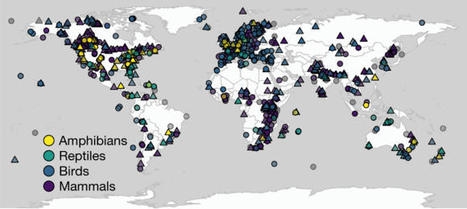Protected areas (PAs) are the primary strategy for slowing terrestrial biodiversity loss. Although expansion of PA coverage is prioritized under the Convention on Biological Diversity, it remains unknown whether PAs mitigate declines across the tetrapod tree of life and to what extent land cover and climate change modify PA effectiveness1,2. Here we analysed rates of change in abundance of 2,239 terrestrial vertebrate populations across the globe. On average, vertebrate populations declined five times more slowly within PAs (−0.4% per year) than at similar sites lacking protection (−1.8% per year). The mitigating effects of PAs varied both within and across vertebrate classes, with amphibians and birds experiencing the greatest benefits. The benefits of PAs were lower for amphibians in areas with converted land cover and lower for reptiles in areas with rapid climate warming.
Research and publish the best content.
Get Started for FREE
Sign up with Facebook Sign up with X
I don't have a Facebook or a X account
Already have an account: Login
Revue de presse et du net par le Pôle de partage des connaissances S&T de l'Office français de la biodiversité
Curated by
DocBiodiv
 Your new post is loading... Your new post is loading...
 Your new post is loading... Your new post is loading...
|











Justin Nowakowski, A., Watling, J.I., Murray, A. et al. Protected areas slow declines unevenly across the tetrapod tree of life. Nature (2023). https://doi.org/10.1038/s41586-023-06562-y